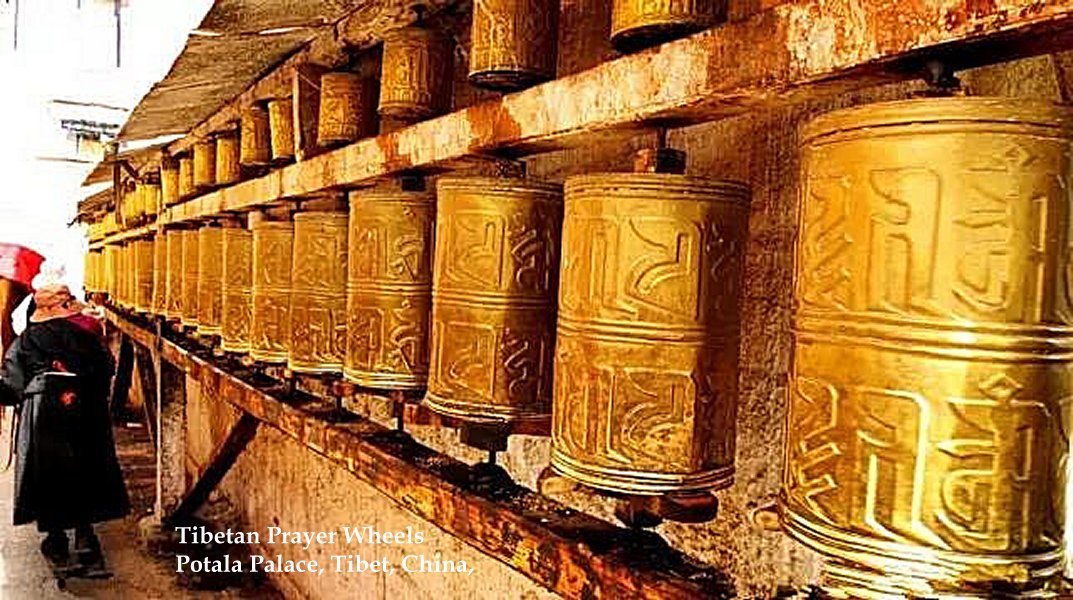Lhasa’s Potala Palace: Greatest Building In Tibet With History Of 1300 Years
A. Sutherland - AncientPages.com - The Potala - also known as "Buddha Mountain" - is the most famous building in Tibet and the winter palace of the Dalai Lama.
It is a massive, earthquake-proof mud-and-brick structure with the largest collection of Tibetan most valuable relics. It is a masterpiece in world architectural history and most probably the highest ancient palace in the world.
According to an ancient legend, Songtsen Gampo, a wise ruler and the most important Tibetan king built a 9-storey palace with a thousand rooms up on the Red Hill and named it Potala. Image via Trip China Guide
The Potala, where the former great Dalai Lama’s stupas are being kept, is now turned into a museum by the Chinese. Inside the museum, there are sutras, jewelry, murals that tell the story of Tibet, and other priceless antiques.
The museum also stores many Buddha figures, Buddhist halls, sculptures, and Tibetan paintings.
With a long history of more than 1300 years, the Potala represents the ancient legacy of Tibetan culture and religion.
Situated on the Red Hill of central Lhasa and rising more than 300 m (about 1,000 ft) above the valley floor, two major structures form the Potala - the Red Palace and the White Palace.
In outward appearance, the huge complex consists of 13 stories 117 meters high and covers an area of 100,000 square meters.
The name of the palace comes from a sacred hill located in South India is a Sanskrit word meaning "Abode of the Avalokitesvara (Buddha of Mercy)."
According to an ancient legend, Songtsen Gampo, a wise ruler and the most important Tibetan king built a 9-storey palace with a thousand rooms up on the Red Hill and named it Potala. He wanted to welcome his bride, Princess Wen Cheng of the Tang Dynasty (618 BC – 907 BC) of China.
This king contributed to the unification of the Qinghai-Tibet Plateau, promoted the development of the economy, politics, and culture in the region.
The Potala Palace was many times destroyed in wars but later rebuilt by architects of the Qing Dynasty (1644 BC – 1911 BC).
The Red Palace, the highest part of the complex, has the walls painted to red to represent stateliness and power; it is entirely devoted to Buddhist prayer and religious study.
The palace contains libraries, chapels, several halls, and passages.
The White Palace has the walls painted to white to convey peace and quietness. It once served as the office building of Tibet local government and the living quarters of Dalai Lama.
The Potala has several additional annexes including gardens, courtyards, the School of Buddhist Logic, the seminary, and even a jail.
In 1994, the Potala treasure landmark of Tibet was declared a World Heritage Site by UNESCO.
Written by – A. Sutherland - AncientPages.com Senior Staff Writer
Copyright © AncientPages.com All rights reserved. This material may not be published, broadcast, rewritten or redistributed in whole or part without the express written permission of AncientPages.com
Expand for referencesReferences:
More From Ancient Pages
-
 First Book Of Breathing: Egyptian Papyrus Sheds Light On Funerary Text Helping The Deceased In Afterlife
News | Oct 22, 2020
First Book Of Breathing: Egyptian Papyrus Sheds Light On Funerary Text Helping The Deceased In Afterlife
News | Oct 22, 2020 -
 Manannán Mac Lir – Irish God Of Sea, Healing, Weather And Master Of Shapeshifting
Celtic Mythology | Mar 2, 2023
Manannán Mac Lir – Irish God Of Sea, Healing, Weather And Master Of Shapeshifting
Celtic Mythology | Mar 2, 2023 -
 Unraveling The Mystery Of The Phoenix Bird – Symbol Of The Sun And Eternal Rebirth Of Life
Egyptian Mythology | Nov 6, 2023
Unraveling The Mystery Of The Phoenix Bird – Symbol Of The Sun And Eternal Rebirth Of Life
Egyptian Mythology | Nov 6, 2023 -
 Kuthodaw Pagoda – ‘The World’s Largest Book’ Carved In 729 Marble Slabs
Featured Stories | Feb 24, 2018
Kuthodaw Pagoda – ‘The World’s Largest Book’ Carved In 729 Marble Slabs
Featured Stories | Feb 24, 2018 -
 Unique Ancient Roman Boxing Gloves Discovered Near Hadrian’s Wall – The Only Surviving Example From 120 A.D.
Archaeology | Feb 20, 2018
Unique Ancient Roman Boxing Gloves Discovered Near Hadrian’s Wall – The Only Surviving Example From 120 A.D.
Archaeology | Feb 20, 2018 -
 Timing Of Easter Island’s Societal Collapse – Revisited
Archaeology | Feb 7, 2020
Timing Of Easter Island’s Societal Collapse – Revisited
Archaeology | Feb 7, 2020 -
 Struggle To Get Mail On Time Has Lasted More Than 5,000 Years – Part 2
Featured Stories | Jul 31, 2017
Struggle To Get Mail On Time Has Lasted More Than 5,000 Years – Part 2
Featured Stories | Jul 31, 2017 -
 200-Year-Old Message In A Bottle Written By Archaeologist Unearthed In France
Archaeology | Sep 30, 2024
200-Year-Old Message In A Bottle Written By Archaeologist Unearthed In France
Archaeology | Sep 30, 2024 -
 Gotu Kola – Extraordinary Ancient Herb That Increases Longevity And Improves Cognitive Abilities
Ancient Traditions And Customs | Mar 13, 2019
Gotu Kola – Extraordinary Ancient Herb That Increases Longevity And Improves Cognitive Abilities
Ancient Traditions And Customs | Mar 13, 2019 -
 Philippine Ayta People Have The Highest Level Of Denisovan DNA – New Study
Archaeology | Aug 12, 2021
Philippine Ayta People Have The Highest Level Of Denisovan DNA – New Study
Archaeology | Aug 12, 2021 -
 25,000 Ancient Egyptian Statues, Ushabti Figurines And Artifacts From New Kingdom Cemetery Revealed For The First Time
Archaeology | Oct 26, 2023
25,000 Ancient Egyptian Statues, Ushabti Figurines And Artifacts From New Kingdom Cemetery Revealed For The First Time
Archaeology | Oct 26, 2023 -
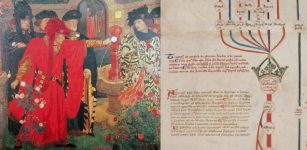 Unique Canterbury Roll – Ancient Manuscript Reveals Its Secrets About History Of England
Archaeology | Jan 5, 2018
Unique Canterbury Roll – Ancient Manuscript Reveals Its Secrets About History Of England
Archaeology | Jan 5, 2018 -
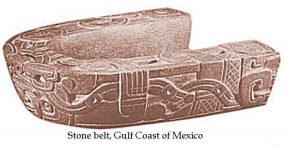 Millennia Old Ceremonial Stone Belt And Maya Pok-A-Tok Ball Game
Ancient Traditions And Customs | Nov 28, 2017
Millennia Old Ceremonial Stone Belt And Maya Pok-A-Tok Ball Game
Ancient Traditions And Customs | Nov 28, 2017 -
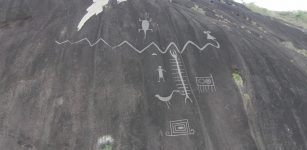 Largest Ever Recorded Ancient Petroglyphs Found In Venezuela – Mapped
Archaeology | Dec 10, 2017
Largest Ever Recorded Ancient Petroglyphs Found In Venezuela – Mapped
Archaeology | Dec 10, 2017 -
 Strange Case Of The ‘Impossible’ Glove Remains Unexplained – The Investigation – Part 2
Featured Stories | May 28, 2019
Strange Case Of The ‘Impossible’ Glove Remains Unexplained – The Investigation – Part 2
Featured Stories | May 28, 2019 -
 Prehistoric Quarry, Stelida, Naxos: Early Human Moved Through Mediterranean Much Earlier
Archaeology | Oct 17, 2019
Prehistoric Quarry, Stelida, Naxos: Early Human Moved Through Mediterranean Much Earlier
Archaeology | Oct 17, 2019 -
 Unique Flagship ‘Gribshunden’: Spectacular Discoveries
Archaeology | Oct 2, 2019
Unique Flagship ‘Gribshunden’: Spectacular Discoveries
Archaeology | Oct 2, 2019 -
 A 5,000-Year-Old Anatolian Sword Identified In Armenian Monastery In Venice
Artifacts | Feb 28, 2020
A 5,000-Year-Old Anatolian Sword Identified In Armenian Monastery In Venice
Artifacts | Feb 28, 2020 -
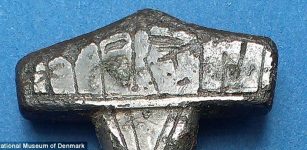 Remarkable Discovery Of Unusual “Hammer Of Thor” Finally Solves An Ancient Mystery
Archaeology | Jul 2, 2014
Remarkable Discovery Of Unusual “Hammer Of Thor” Finally Solves An Ancient Mystery
Archaeology | Jul 2, 2014 -
 3,000-Year-Old Stela Challenges Assumptions Of Gender And Social Roles In Prehistoric Times
Archaeology | Nov 16, 2023
3,000-Year-Old Stela Challenges Assumptions Of Gender And Social Roles In Prehistoric Times
Archaeology | Nov 16, 2023




